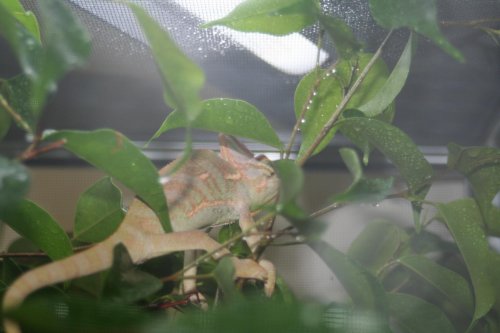SoCaliSon
Avid Member
You say you know the breeder... Have you seen the sire of your cham? I think it is a very attractive brown. I have never seen it in any of my own Veileds...Which leads me to this thought; maybe genetics could be at play somewhat. While I am sure as he settles in, and matures and sheds, you will see new and more vibrant colors in his patterns, he is still very young to be showing many colors. There is a chance that his genes carry a bit more brown, which I think looks cool.
Edit: And I would definately move him away from the kids and the T.V., Those colors very well could be do to stress of some sort...But He looks healthy!
~Joe
Edit: And I would definately move him away from the kids and the T.V., Those colors very well could be do to stress of some sort...But He looks healthy!
~Joe
Last edited:


